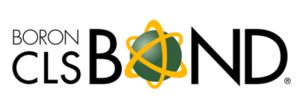SAVE THE OCEANS
The Oceans are so vast and deep that until fairly recently, it was widely assumed that no matter how much trash and chemicals humans dumped into them, the effects would be negligible. Today, we realize that this early “policy” placed a once flourishing ocean ecosystem on the brink of collapse. Ocean water covers more than 70 percent of the Earth, and only in recent decades have we begun to understand how humans impact this watery habitat. Marine pollution, as distinct from overall water pollution, focuses on human-created products that enter the ocean. Before 1972, humans around the world spewed trash, sewage sludge, and chemical, industrial, and radioactive wastes into the ocean with impunity. Millions of tons of heavy metals and chemical contaminants, along with thousands of containers of radioactive waste, were purposely thrown into the ocean.
OSPAR started in 1972 with the Oslo Convention against dumping, and was broadened to cover land-based sources of marine pollution and the offshore industry by the Paris Convention of 1974. These two conventions were unified, up-dated and extended by the 1992 OSPAR Convention. The new annex on biodiversity and ecosystems was adopted in 1998 to cover non-polluting human activities that can adversely affect the sea.
OSPAR, (named after the original Oslo and Paris Conventions (“OS” for Oslo and “PAR” for Paris) is the mechanism by which 15 Governments & the EU cooperate to protect the marine environment of the North- East Atlantic. OSPAR considers the use and discharge of hazardous substances in the offshore oil and gas industry as a cause for great concern. The fifteen Governments are Belgium, Denmark, Finland, France, Germany, Iceland, Ireland, Luxembourg, The Netherlands, Norway, Portugal, Spain, Sweden, Switzerland and United Kingdom.
To reduce the overall impact of offshore chemicals on the marine environment, OSPAR has adopted a harmonised mandatory control system for use and reduction of discharges of offshore chemicals. This system promotes the shift towards the use of less hazardous or preferably non-hazardous substances. There is a common OSPAR interpretation of which chemicals are covered and not covered by the control system.
Chemical suppliers must provide the national authorities with data and information about chemicals to be used and discharged offshore according to the Harmonised Offshore Chemical Notification Format (HOCNF). OSPAR has guidelines on how to complete the format. Based on the information sent by the chemical supplier the local national authorities carry out the pre-screening and take the appropriate regulatory action, such as issuing discharge permits.
MotorSilk® treatments and LubriSilk® lubricants and paints are all biodegradable to ISO 14593 standard and not harmful to aquatic life. All LubriSilk® greases have received HOCNF and REACH Certification, have been proven to not harm aquatic life in European Tests, and may be used in aquatic and marine applications.
HOCNF = Harmonized Offshore Chemical Notification Format
A HOCNF is a document that tells you how a chemical is affecting marine life. It contains tests for how the substances present in the product will bioaccumulate, biodegrade and how toxic they are. From the results of these tests, the chemical will get a classification.
What dos the HOCNF form tell us:
- What is the product going to be used for?
- Exactly what is the product made of?
- Density of the product, will it float, dissolve or sink in sea water?
- Will the substances in the product bioaccumulate?
- Will the substances in the product biodegrade?
- Are the substances in the product toxic to algae, crustacean, fish or the sediment?
Bioaccumulation refers to the accumulation of substances in the environment before they are taken in by the first organism in a food chain. An example is heavy metals that will accumulate and end up in the fish.
Biodegradation is the chemical breakdown of materials by a physiological environment. Organic material can be degraded aerobically with oxygen, or anaerobically, without oxygen. The HOCNF test is aerobic. Biodegradable matter is generally organic material such as plant and animal matter and other substances originating from living organisms, or artificial materials that are similar enough to plant and animal matter to be put to use by microorganisms.
Aquatic toxicity testing submerges key indicator species of fish or crustacean to certain concentrations of a substance in their environment to determine the lethality level. Fish are exposed for 96 hours while crustacea are exposed for 48 hours. It is tested how algae are affected after 72 hours of exposure, and in some instances, it is tested how the chemical is affecting the sediment, and that goes on for 10 days.
REACH = Registration, Evaluation, Authorisation and Restriction of Chemicals
REACH is a regulation no 1907/2006 of the European Parliament 2006 concerning the Registration, Evaluation, Authorisation and Restriction of Chemicals (REACH), establishing a European Chemicals Agency.






